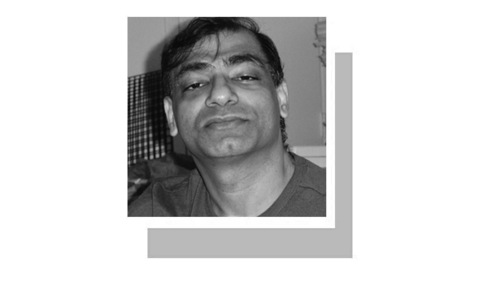
In this last column in the series on the Art of Storytelling, I will write about my most recent adventure in storytelling. The protagonists in this case were Grade 9-10 girls from public schools from Larkana, Gilgit, and Islamabad villages, and my role was limited to designing a programme that helped them write stories about themselves, using their educational journey as the central plot — all within a space of five lessons.
Now, if you send out a stranger in a classroom who starts asking children about their lives, they are unlikely to open up. In order to break the ice, I used storytelling as an engagement tool. The story selected was my favourite folktale about a podna’s (small weaver bird’s) adventures as it sets out to rescue the podni from the clutches of a king. By narrating it interactively, and using theatrics and humour, the children were prompted to join the storytelling activity.
They were invited to come out and narrate small bits from the story before the class and, in this manner, a norm was established to tell stories before one’s classmates. At the end of the first lesson, they were told that, just like the podna, we also have our adventures and it was time to tell our own stories. They all happily agreed. Over a 40-minute period of telling stories to each other, we had become friends, which is a testament to the socialising power of a good story.
At the start of the second lesson, I asked the students some basic information about their parents and family, their ambition in life, their support system, and the challenges they saw in achieving their ambition. These simple questions helped the students narrate a fair bit about their family situation, and their challenges — whether poverty, lack of family support, or active opposition to their continuing their education.
The support system that helped them continue their education was also revealed. As homework, I asked them to write what they had narrated to us in the class, in the form of a personal narrative.
In the third lesson, the students were again asked to read out what they had written. Most of the students fell into two categories: Those who willingly narrated their issues before the class, but did not disclose the information which was of a personal nature when writing it. And there were students who were reluctant to give out any personal information before their class, but felt more comfortable writing about their family issues, and sharing them with us, often with a request to not read it out before the class.
At this stage, the students had both narrated and written about themselves, listened to the narratives of other girls, found similarities in their own and others’ narratives, had a fair sense of what could be a part of a personal narrative, and were ready for the next exercise in the programme.
At the end of the third lesson, I asked everyone about their favourite place in their home. For many girls, their favourite place was some nook inside their home or the rooftop, where they could be themselves.
Next, I asked them to imagine that they were sitting in their favourite place, reflecting about who they were, their past life and their future, and then write about their lives.
This exercise offered a loosely structured format to help the students think about and rework in a new format some of the material they had already narrated and written, and weave as well incidents from their own lives they had recalled while listening to other girls’ narratives.
At the start of the fourth lesson, I asked the girls to read out what they had written of themselves and their lives while sitting in their favourite place. And it was noticed that most students had a more developed, complex personal narrative.
But between the oral narrative told on the first day, and the two written narratives submitted on days three and four, there were interesting elements in each narrative that were missing in the other versions. We discussed how all these elements could be woven together to make a comprehensive narrative, which I asked them to submit on the fifth day, when the best manuscripts would be selected for future publication.
The programme’s progress can be gauged by the following factors:
Complexity of narrative: This was a good measure of understanding whether or not the exercise in self-expression is working, and allowing the student to develop a more complex and nuanced understanding of her narrative.
Proof of a wide number of students participating voluntarily: As the programme was not compulsory but voluntary for the students to participate in, as the programme progressed, we noticed that more and more girls joined their classmates in narrating their stories. They had earlier not participated in the programme, and kept to themselves, and a number of them often brought us very moving stories on the last day, as we were winding up the programme in their school.
Proof of greater integration between the girls at programme end: In a number of schools, where girls were often struggling with issues of permission to continue their education, poverty and family issues, they would become less communicative. As a result, their bond with their classmates would also weaken. After these girls had mustered the courage to tell their stories, and a true picture of their challenges and difficult situation emerged, their classmates rallied to their support.
All these elements were a proof of the programme’s success. Like all teaching assignments, this too was a learning experience, and it was I who learned most from all of them.
The columnist is a novelist, author and translator. He can be reached on X: @microMAF or via his website: micromaf.com
Published in Dawn, Books & Authors, June 23rd, 2024














































Dear visitor, the comments section is undergoing an overhaul and will return soon.